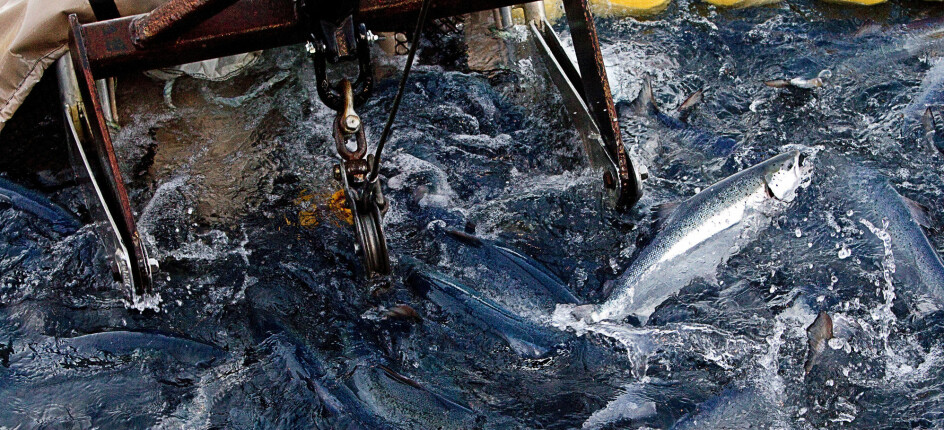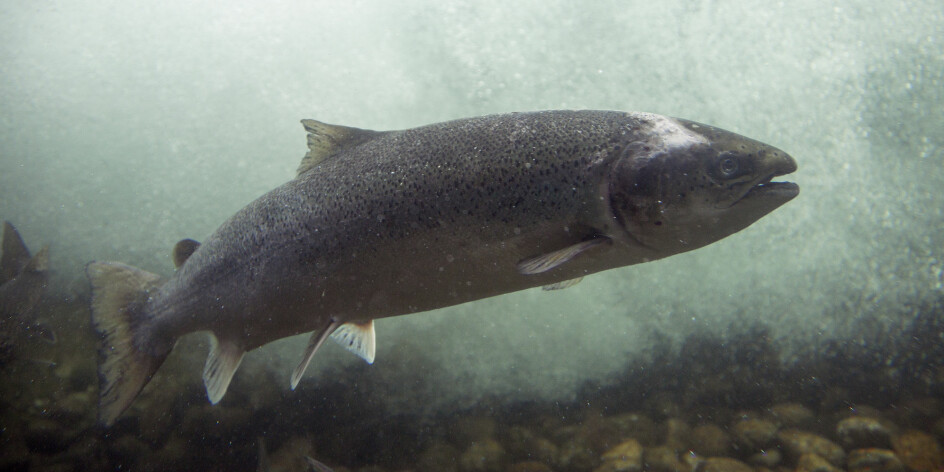
Norwegian fish farmers reprimanded for poor treatment of cleaner fish
The aquaculture industry doesn’t do a good enough job supervising the use of cleaner fish, and many die. Unless the industry does a better job documenting the welfare of cleaner fish, it will need to stop using them, the Norwegian Food Safety Authority states in new report.
Fish farms use cleaner fish to fight salmon lice. Species such as lumpsuckers and wrasse basically eat the lice off the salmon.
In the last half of 2018, the Norwegian Food Safety Authority assessed how the aquaculture industry uses cleaner fish to combat salmon lice. The goal was to find out more about cleaner fish welfare.
The Norwegian Animal Welfare Act also applies to cleaner fish.
The audit found a lot of deviations from the regulations, according to the final report, which was released in the last week of February.
Shape up or stop using cleaner fish
Fish farmers are doing a lot of good work to ensure the welfare of cleaner fish used by salmon farms, the Norwegian Food Safety Authority write in its report. Nevertheless, a high proportion of cleaner fish either disappear or die.
In many cases, cleaner fish welfare is not good enough, the Food Safety Authority states.
The problem may be that cleaner fish do not adapt to their lives at the fish farm. Or it may be that fish farmers don’t take enough care with the cleaner fish when they catch, store, breed, transport and put the fish to work.
"This cannot continue," the Food Safety Authority writes.
"The industry has a big job to do and has to document actual improvements if they want to continue to use cleaner fish in the future," they state on their website.
Checked 200 installations that used cleaner fish
A large proportion of cleaner fish, such as lumpsuckers, are farmed for use by the salmon industry. Cleaner fish that aren’t raised in hatcheries are caught in the wild.
The Norwegian Food Safety Authority inspected a total of 200 Norwegian installations, including all 33 cleaner fish hatcheries. The authority also checked 167 salmon farms that use cleaner fish. This is roughly 25 per cent of users.
They also inspected some of the fishermen who caught wild cleaner fish.
Issues at one out of every four fish farms
Among the 167 salmon farmers that were checked, the Food Safety Authority found problems at 46, or 28 per cent of them.
Seventeen of the problems related to a lack of routines for removing cleaner fish from salmon cages before the salmon are deloused.
The cleaner fish thus suffered injuries such as wear and tear and skin ulcers because they were subjected to delousing. This increased their mortality.
Since cleaner fish don’t get salmon lice, there is no need for them to be deloused. Norwegian regulations clearly state that cleaner fish must be fished out of the cage if it would be better for them to be removed from the cage.
Other issues were the failure to record cleaner fish that were removed from the facility, killed or stored in between being redeployed to clean salmon. These issues were identified at 21 facilities.
Twenty facilities lacked a way to handle the situation if mortality in their cleaner fish increased.
Many farms recorded these problems without having measures to prevent recurrences.
Difficult to fish out cleaner fish
In addition, the Food Safety Authority conducted a survey on the causes of mortality in cleaner fish, among both hatcheries and users of cleaner fish.
This survey was conducted in collaboration with NTNU Social Research, the Institute of Marine Research and the Norwegian Veterinary Institute.
The salmon farm installations admitted in the survey that it was difficult to find methods that worked well for removing cleaner fish from cages.
Nevertheless, 70 per cent reported that they removed cleaner fish by fishing them out when it came time to delouse and slaughter the salmon.
Most cleaner fish die from delousing
The most important reason behind mortality in cleaner fish is non-medicinal delousing, according to the industry itself. In non-medicinal delousing, farms can use hot water, high pressure water, physical obstacles and laser technology to remove lice from salmon.
The next most important causes of mortality in decreasing order of importance were illness, injury during transport or release, or poor quality from the supplier.
But salmon producers often can’t find any clear cause for cleaner fish mortality.
The goal of the Norwegian Food Safety Authority's campaign was also to raise awareness in the industry about the different rules that apply to cleaner fish, and to get the industry to rectify regulatory violations. They also proposed measures to ensure cleaner fish welfare.
64 per cent had anomalies
The largest proportion of anomalies or problems found by the inspectors were in fish hatcheries. Of the 33 facilities that were examined, 64 per cent had anomalies.
Most of the anomalies in these facilities concerned routines for anesthetizing the fish before they were vaccinated, the lack of a plan for handling an increase in mortality in their cleaner fish, and a poor living environment for the fish.
Must follow the law
The Food Safety Authority's requirements clearly state that fish farmers must comply with the legislation, which means they must:
- Document how many cleaner fish die and disappear, by species.
- Only expose cleaner fish to handling that is justified in terms of their welfare.
- Clarify the causes behind cleaner fish mortality and take action to prevent these causes from recurring.
- Document significant improvements in survival and welfare.
If these measures do not significantly improve the welfare of the cleaner fish, the facility will have to cease using them, in whole or in part, the Food Safety Authority said. They will prioritize oversight of cleaner fish in 2020.
Norwegian Seafood Federation: Fish should have a good life
The Norwegian Seafood Federation, a trade association, said the following about the report:
“We know too little about the reasons why cleaner fish die and about the status of their welfare when the fish are alive, since the only welfare indicator used by the Norwegian Food Safety Authority is the number of dead fish,” Øyvind André Haram, head of communications at the federation, wrote in an email.
“Our goal is to safeguard fish welfare,” he said.
“There are currently no good indicators for general use regarding the welfare of the fish when they are alive. It seems a little late in the game to evaluate the fish’s welfare after the fish is dead, however. Fish should have a good life when they are alive, too,” he wrote.
Haram said the industry will work with the Food Safety Authority to find solutions and improve the situation.
Haram said that that the Norwegian Seafood Federation has no comment on the possible discontinuation of using cleaner fish to combat lice in aquaculture.
Translated by: Nancy Bazilchuk
Reference:
Nasjonal tilsynskampanje 2018-2019: Velferd hos rensefisk, (National oversight campaign 2018-2019: Cleaner fish welfare) 24 February 2020.
———


































